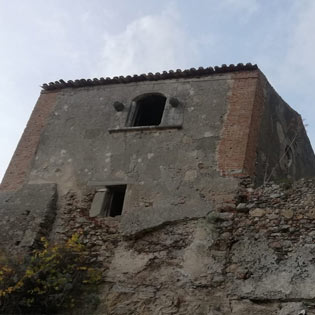Mother Church of Savoca

Ludvig14 - CC4.0
The Church of Santa Maria in Cielo Assunta is the Matrix Church of Savoca, due to the beauty and history contained in this building in 1910 it was declared a National Monument.
It was built in 1130 on a pre-existing structure, during the reign of King Roger II of Sicily, and it is believed that Roger II himself personally contributed to the construction costs. In the 15th century the orientation of the temple was reversed and it was enlarged: the current apse and facade were built and two large chapels were built on the sides of the temple. In 1750, to the right of the sacred building, the palace was built on two levels of the rectory: the first floor was used as a sacristy, where highly valuable pictorial works, now almost entirely lost, were kept and exhibited; the ground floor became the seat of the Monte frumentario.
The double-sloping façade is marked by three portals corresponding to the central and lateral naves. The central portal, of Renaissance style, features delicate leaf decorations. The classically derived cultures such as crossed cornucopias and pomegranate fruits and the compared corner shelves with corn plants depicted, allude to fertility and prosperity. The portal is pushed upwards by lateral pilasters which guide the gaze towards the lava stone rose window with five arms which converge in a circle on which the acrostic IHS is graffitied with the civic coat of arms at the top, represented by the elderberry plant.
The massive bell tower is characterized by fifteenth-century single-lancet windows and missing the terminal cusp, it houses a particular clock of a rare type, which functions according to the ancient measurement of time, the so-called Hora italica.
The interior is divided into three naves by monolithic columns surmounted by valuable Romanesque capitals. There are seven altars: the high altar in fine marble from 1795, located in the center of the apse, and six lateral marble altars. In the two large side chapels, dating back to the great restoration carried out in the early 16th century, there are: on the right, a valuable Sicilian baroque altar dedicated to the Blessed Sacrament, built at the expense of the powerful Trimarchi family from Savoce; on the left, the altar dedicated to the Madonna of Fátima, on which is positioned a large statuary complex blessed by Pope John Paul II.
In the underground crypt of the church the putridarium can be visited, where, in past centuries, mummification took place of the bodies of the town's notables which found their definitive location in the crypt of the local Capuchin convent.
The church houses works of notable artistic value: two wall frescoes from the 12th century in Sicilian-Norman style, depicting Saint John Chrysostom and Saint Basil the Great; the ancient wooden chair of the Archimandrite of Messina which had its peripheral seat in this church; the fifteenth-century wooden trussed ceiling; the sixteenth-century frescoes that adorn the walls and the basin of the apse depicting the Assumption of the Virgin Mary into Heaven, in the basin, and the Twelve Apostles, on the walls; the baroque wooden pulpit.


